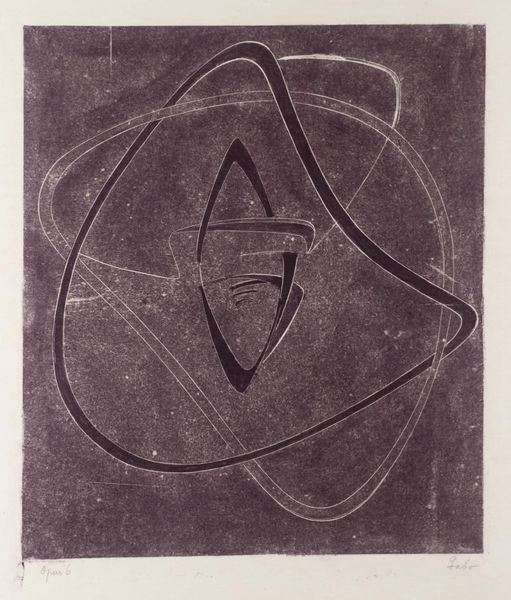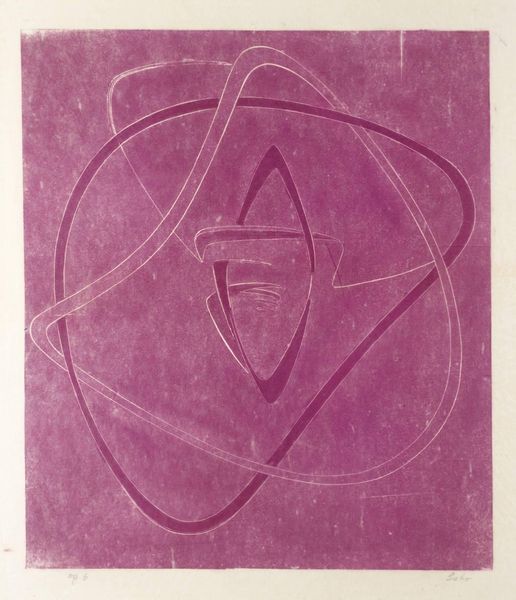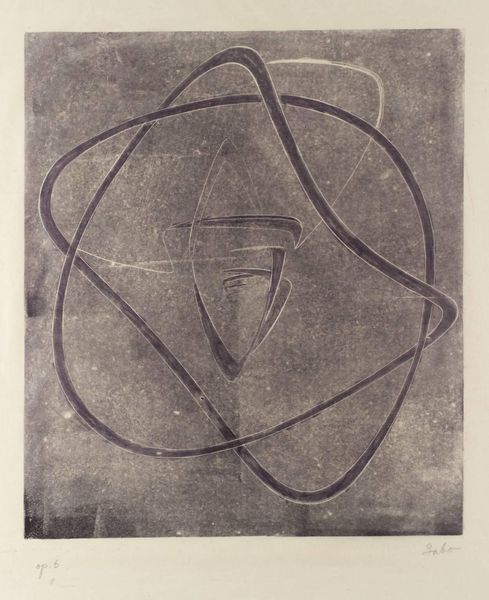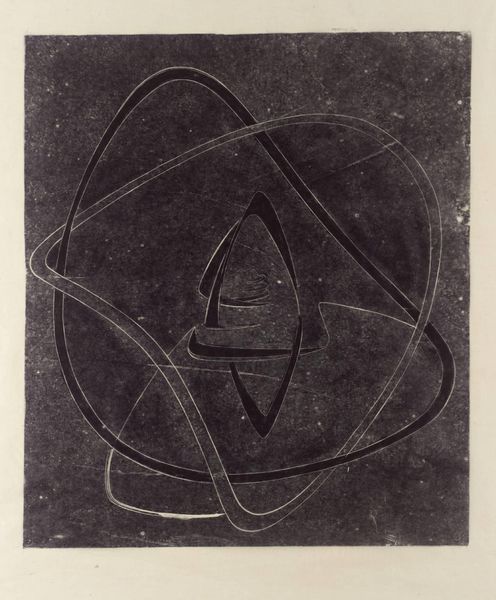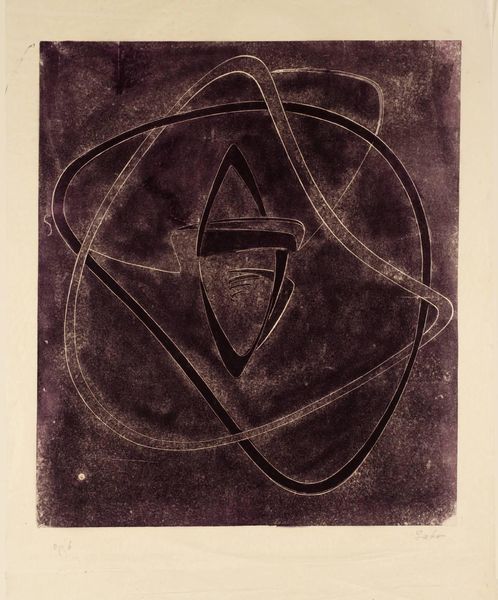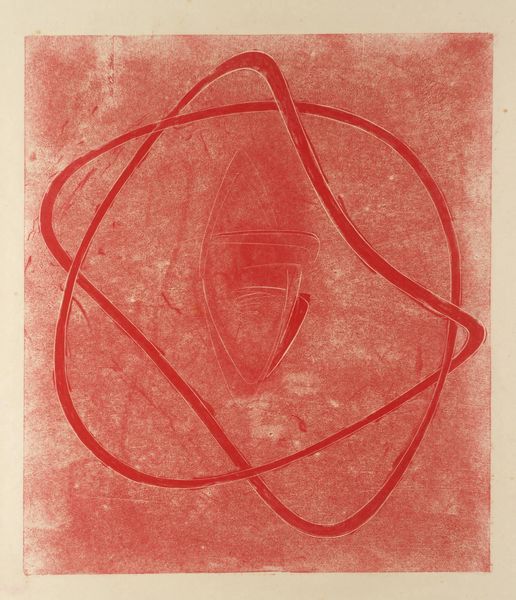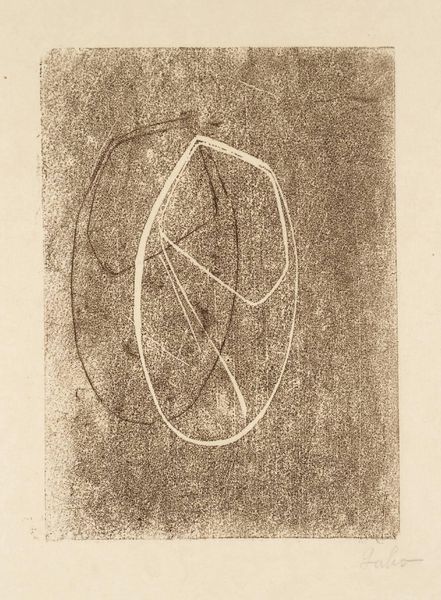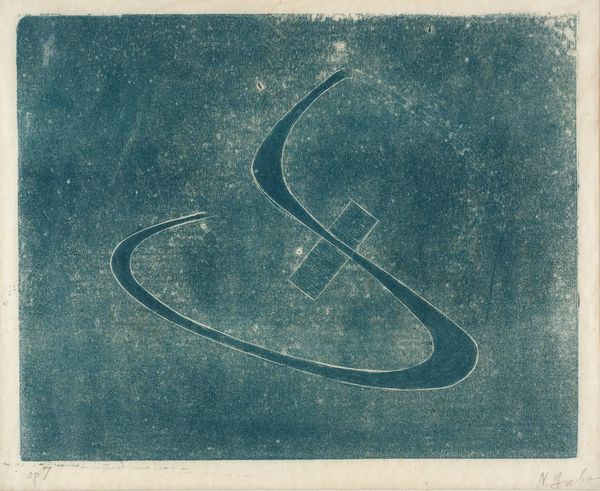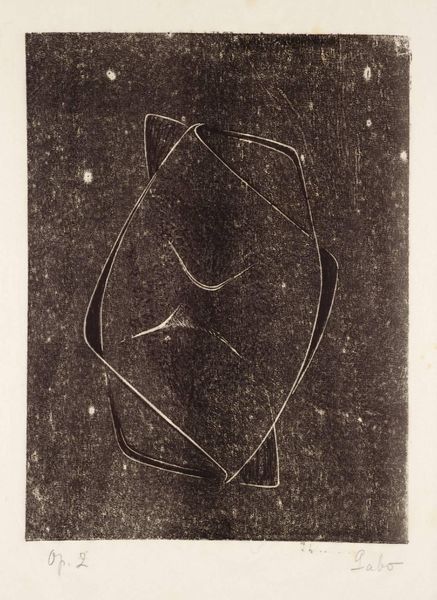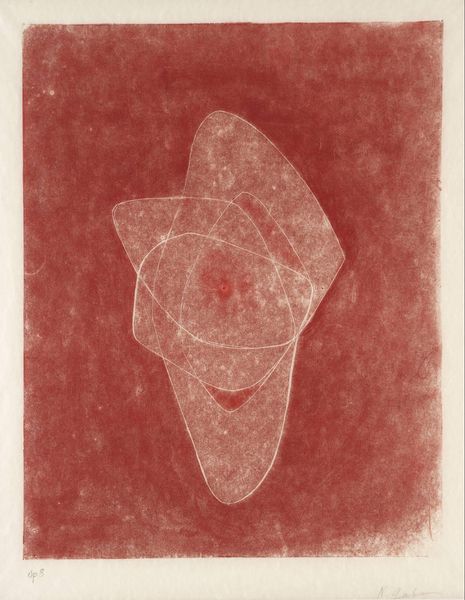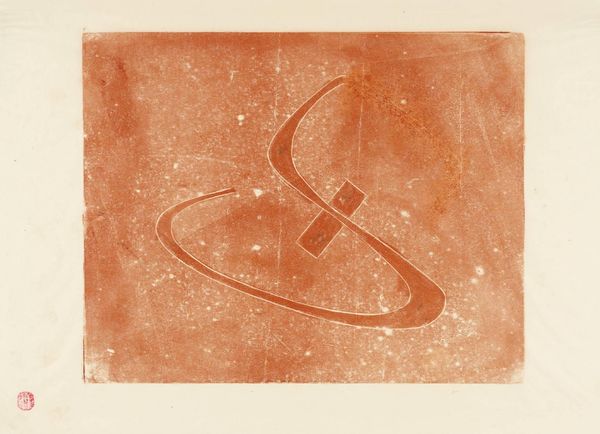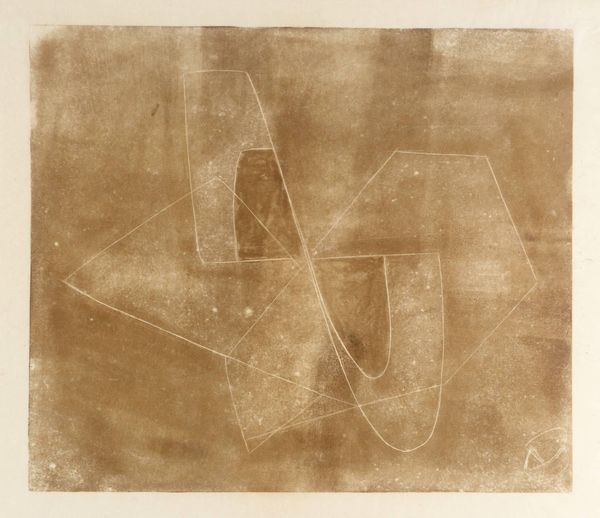
Dimensions: image: 385 x 334 mm
Copyright: The Work of Naum Gabo © Nina & Graham Williams/Tate, London 2014 | CC-BY-NC-ND 4.0 DEED, Photo: Tate
Editor: Here we have Naum Gabo's "Opus 6," a print held at the Tate. It has an almost ethereal quality with its swirling shapes. What do you see in this piece, particularly regarding its symbolic weight? Curator: The looping lines and central triangle evoke a sense of interconnectedness and dynamic balance. The triangle, an ancient symbol of stability and divinity, is here disrupted, almost destabilized, by the orbiting curves. Does that tension resonate with you? Editor: It does! The tension between order and chaos is palpable. Is this disruption a comment on tradition? Curator: Perhaps. Gabo, with his Constructivist ideals, aimed to create a new visual language. The "Opus" title suggests a musical composition. Could this be visual music—a harmony built from dissonance? Editor: That's a beautiful way to frame it. I see now how the symbolism works to create meaning beyond the abstract forms. Curator: Indeed. The artwork invites us to listen with our eyes, deciphering the emotional score of line and form.
Comments
Join the conversation
Join millions of artists and users on Artera today and experience the ultimate creative platform.
tate 7 months ago
⋮
In 1935 the Russian-born artist Naum Gabo, a pioneer of abstraction, arrived in England as a refugee. He influenced the development of Modernism in the 1930s and 1940s and was associated with the artists Ben Nicholson and Barbara Hepworth, his neighbours in the fishing village of St Ives during the Second World War. After the war he moved to the USA. There are strong holdings of Gabo's work in the Collection as a result of his stay in England and of his friendship with a previous Tate Director, Sir Norman Reid. Gabo's celebrated geometric constructions (see Archive display) examine the object in space. These wood engravings reflect his sculptural concerns in a two-dimensional format. Gallery label, August 2004
